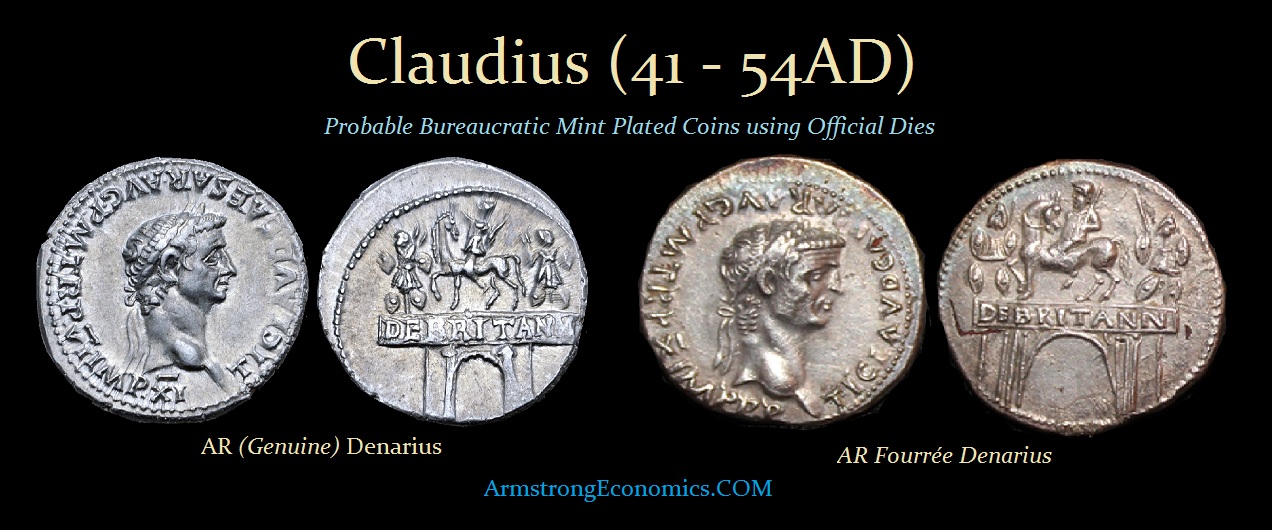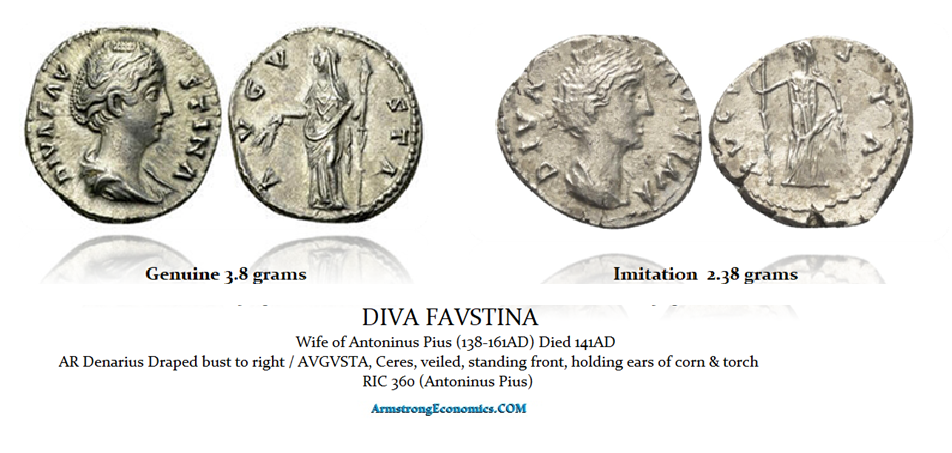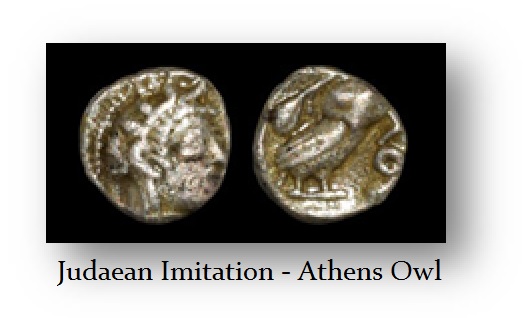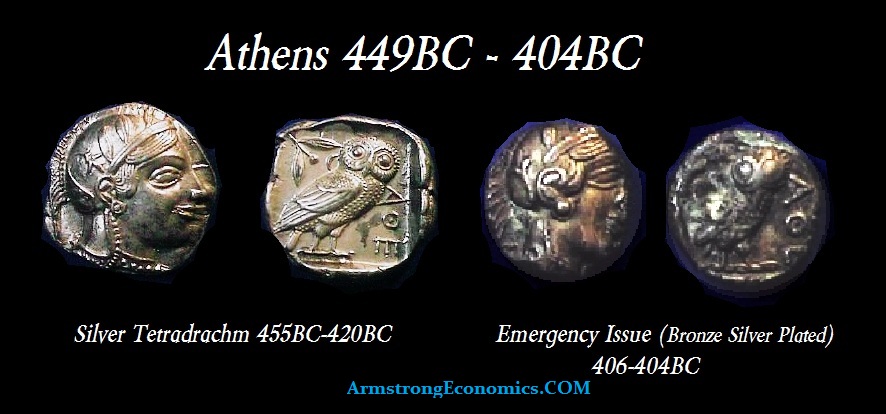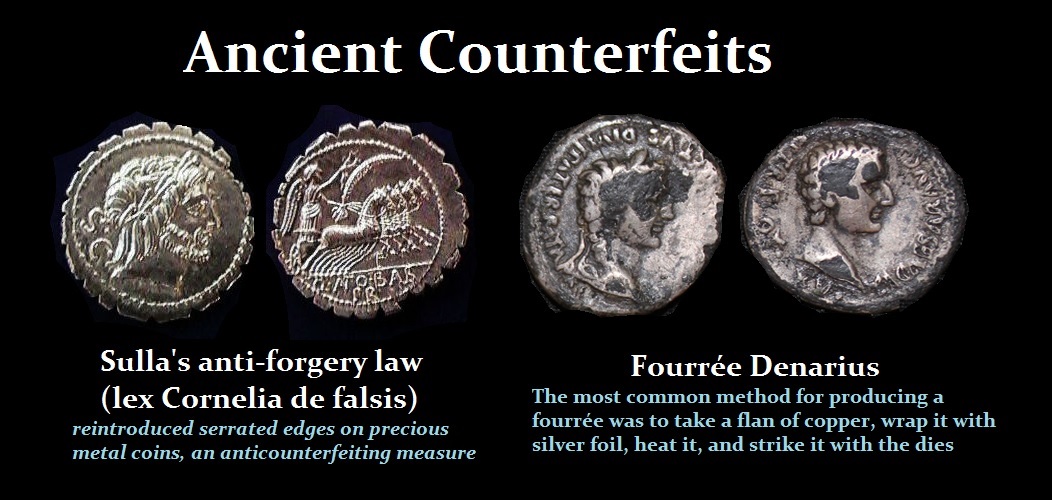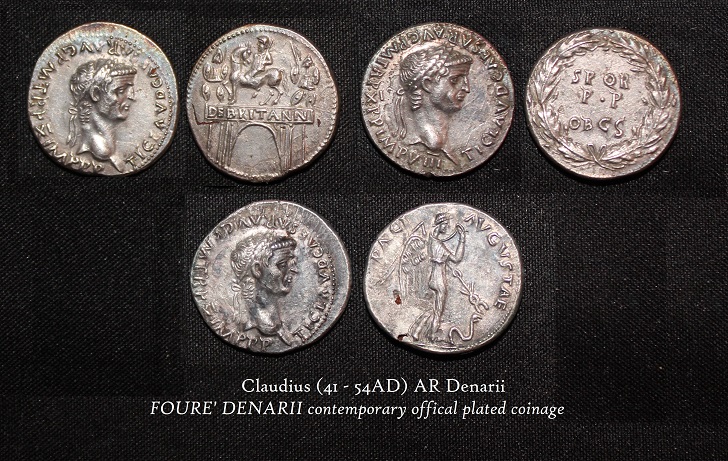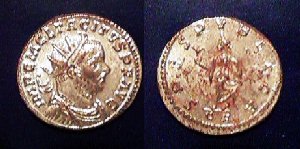Counterfeiting precious metal coins began when coins were virtually the first invented. A fourrée (meaning “stuffed”) is a coin that is typically counterfeit but sometimes officially produced either by the government or by people working in the mint. A fourrée is made from a base metal core plated with a precious metal to look like a solid metal coin. This was a clever ancient process by which a silver-plated coin was produced.
The interesting aspect of this is simply the quality of the design. These are not made by amateur counterfeits. They appear to have been officially minted by people who were in the mint. Perhaps they were pocketing the actual silver as Emperor Aurelian had to wage war on the corruption of the ninth in Rome. For example, here is an imitation made of quality silver among the Germanic tribes. Note that the artistic quality is lacking. The fourrée is typically of perfect artistic quality.
The Greeks
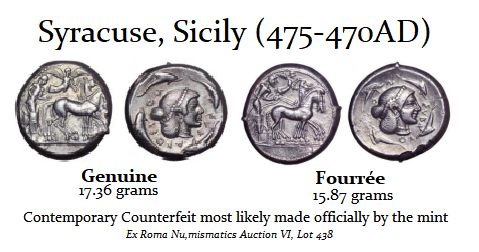
Contemporary counterfeits called fourrée are known from the earliest periods of Greek coinage. The Greek city of Syracuse on the island of Sicily was a major city-state that issued some spectacular coins. Here is a fifth-century BC tetradrachm bearing a quadriga (four-horse chariot) on the obverse and the head of Arethusa encircled by four swimming dolphins on the reverse. High-quality ancient fourrée of these coins were produced, and the artistic quality is virtually undetectable. They were produced by either nefarious individuals in the mint or officially by the state.
The Athenian “owl” tetradrachms were truly the first widely used currency internationally. Imitations were so common that in 375BC the city enacted “Nikophon’s Law,” establishing official coin testers in the agora (public market):
If anyone brings forward [foreign silver currency] which has the same device as the Attic, [if it is good,] let the Tester give it back to the one who brought it forward; but if it is [bronze at the core] or lead at the core, let him cut it across [immediately] … if the Tester does not sit at his post, or if he does not test according to the law, let the {official} beat him fifty lashes with the [whip]. If anyone does not accept whatever silver currency the Tester has approved, let everything that he offers for sale on [that] day be confiscated.
The Tester would carefully inspect suspected coins, weigh them against the official standard (an “Attic” or Athenian tetradrachm was supposed to weigh 17.24 grams), and perhaps make test cuts on the edge with a small chisel to see if there was a plated core.
Many surviving owls bear such test cuts, which greatly reduce their value to collectors. Some counterfeit owls, even with noticeably deficient weight, managed to survive intact and be collectable today — a 12.44 gram example sold for $300 in a recent auction.
However, during the Peloponnesian War (431 – 404 BC), under attack by Sparta, Athens issued its emergency coinage in 406 BC, which was fourrée with a copper core and thin silver plating. When peace returned in 406 BC, the economy gradually recovered, and by 393 BC, Athenians could exchange their emergency coins for good silver.
The Romans
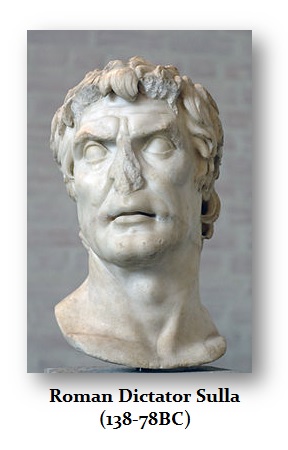 The Roman dictator Sulla introduced his own anti-forgery law (lex Cornelia de falsis), that reintroduced serrated edges on precious metal coins, an anticounterfeiting measure that had been tried earlier. The crime of falsum consisted of acts of fraud that were injurious to the public (fides public), such as forgery, counterfeiting money, and perverting the course of justice by fraud and perjury. Under the Roman Twelve Tables, a person who gave false testimony should be thrown from the Tarpeian Rock (Gell. xxi. 53). Any judge who took a bribe should be liable to capital punishment (Gell. xxi. 7). The next legislation in falsum, was contained in one of the Leges Corneliae passed in the time of the dictator Sulla. According to Cicero, two types of fraud were covered by the Lex Testamentaria and the Lex Numaria (Verr. ii. 1, 42). Paulus, who gives its provisions, entitles it Lex Cornelia Testamentaria. The Lex Cornelia appears to have included only two specific kinds of falsum: forgery and suppression of wills, adulteration of the coinage, and counterfeiting.
The Roman dictator Sulla introduced his own anti-forgery law (lex Cornelia de falsis), that reintroduced serrated edges on precious metal coins, an anticounterfeiting measure that had been tried earlier. The crime of falsum consisted of acts of fraud that were injurious to the public (fides public), such as forgery, counterfeiting money, and perverting the course of justice by fraud and perjury. Under the Roman Twelve Tables, a person who gave false testimony should be thrown from the Tarpeian Rock (Gell. xxi. 53). Any judge who took a bribe should be liable to capital punishment (Gell. xxi. 7). The next legislation in falsum, was contained in one of the Leges Corneliae passed in the time of the dictator Sulla. According to Cicero, two types of fraud were covered by the Lex Testamentaria and the Lex Numaria (Verr. ii. 1, 42). Paulus, who gives its provisions, entitles it Lex Cornelia Testamentaria. The Lex Cornelia appears to have included only two specific kinds of falsum: forgery and suppression of wills, adulteration of the coinage, and counterfeiting.
An offence against either branch of falsum was a crime against the public (crimen publicum). The punishment of falsum under the law (at least when Paulus wrote) was deportatio in insulam for the higher (“honestiores”) offense and the mines, crucifixion, or other degrading punishment for the lower (“humiliores”). In place of deportatio in insulam the punishment, according to the statute itself, was probably the old form of banishment, known as ignis et aquae interdictio (q. v.). The property of a convicted person was also confiscated.
Sulla reintroduced the serrated denarii, or serrati, which featured about 20 notched chisel marks on the edge of the coin. These marks were produced to demonstrate the integrity of the coin. This effort proved futile since examples of fourrée serrati also exist.
The production of fourrées extends back in time to the first coinage in Asia Minor during the 7th century BC. The most common method for producing a fourrée was to take a flan of copper, wrap it with silver foil, heat it, and strike it with the dies. If the coin in this manner was sufficiently heated and struck hard enough so this outer layer of alloy (a mixture of 72% silver and 28% copper) had a lower melting point of any mixture of these two metals. Thus, the outer foil was fused together with the core. Exposure of the deception was often due to wear at the high points of the coin, or moisture trapped between the layers that caused the foil to bubble and then break as the core corroded.
Tacitus Antoninianus Silver Platted
During the Crisis of the Third Century, the Roman coinage collapsed with the barbarian invasions. The coinage was heavily debased of precious metal coinage containing just 5% silver or less. It was then chemically leached or pickled to dissolve the copper from the surface, producing a surface of almost pure silver that would quickly wear away. These “silvered” coins are not considered fourrées since they are not actually plated, given the metal is actually a continuous layer and was officially produced by the government.

